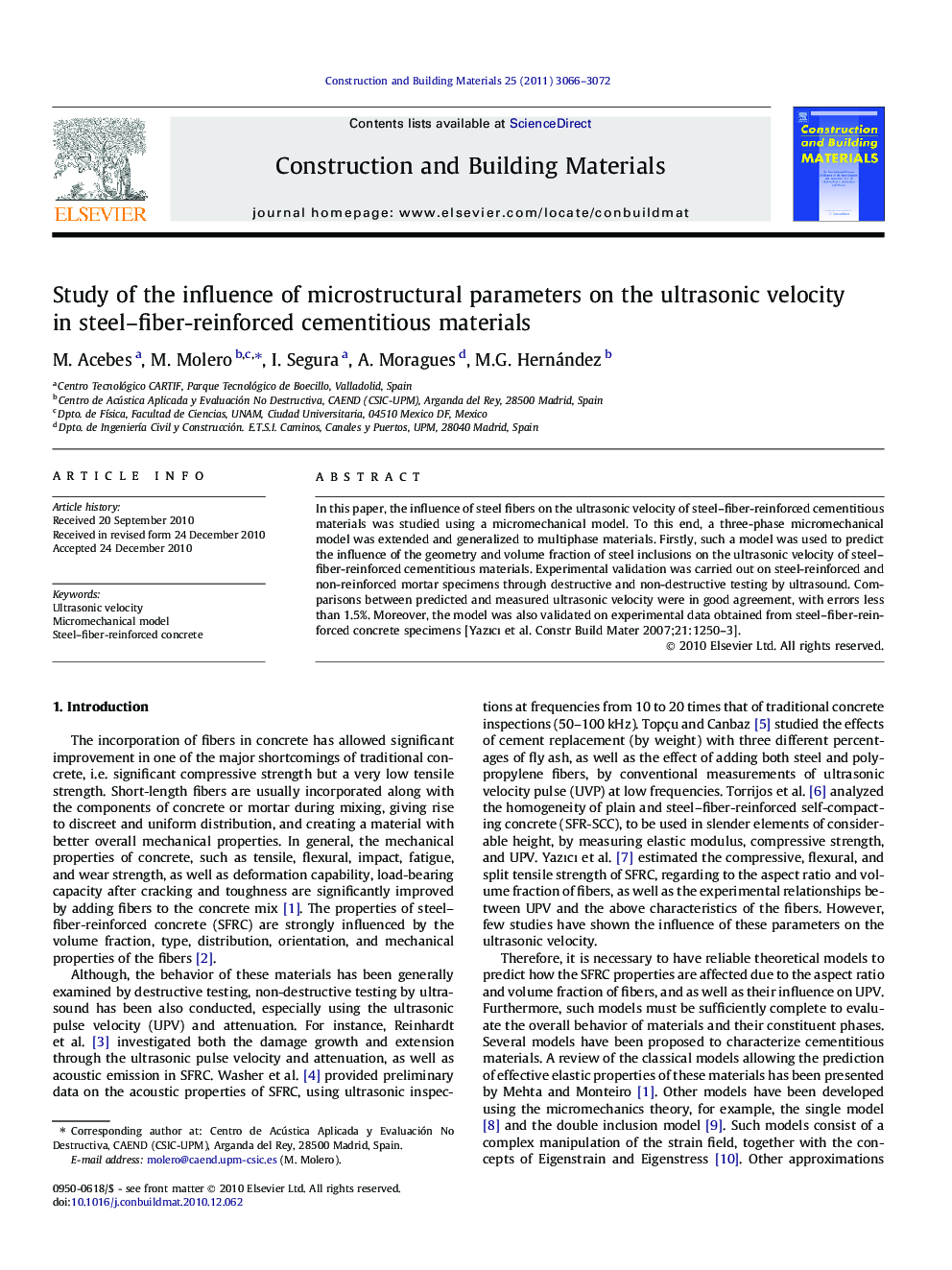| Article ID | Journal | Published Year | Pages | File Type |
|---|---|---|---|---|
| 259239 | Construction and Building Materials | 2011 | 7 Pages |
In this paper, the influence of steel fibers on the ultrasonic velocity of steel–fiber-reinforced cementitious materials was studied using a micromechanical model. To this end, a three-phase micromechanical model was extended and generalized to multiphase materials. Firstly, such a model was used to predict the influence of the geometry and volume fraction of steel inclusions on the ultrasonic velocity of steel–fiber-reinforced cementitious materials. Experimental validation was carried out on steel-reinforced and non-reinforced mortar specimens through destructive and non-destructive testing by ultrasound. Comparisons between predicted and measured ultrasonic velocity were in good agreement, with errors less than 1.5%. Moreover, the model was also validated on experimental data obtained from steel–fiber-reinforced concrete specimens [Yazıcı et al. Constr Build Mater 2007;21:1250–3].
Research highlights► The influence of steel fibers on the ultrasonic velocity in SFRM and SFRC was studied. ► This study was carried out using a multiphase approach of a micromechanical model. ► Comparisons between predicted and measured ultrasonic velocity were in good agreement. ► As a result, concentration and aspect ratio of air voids shall be considered in the materials’ model.
